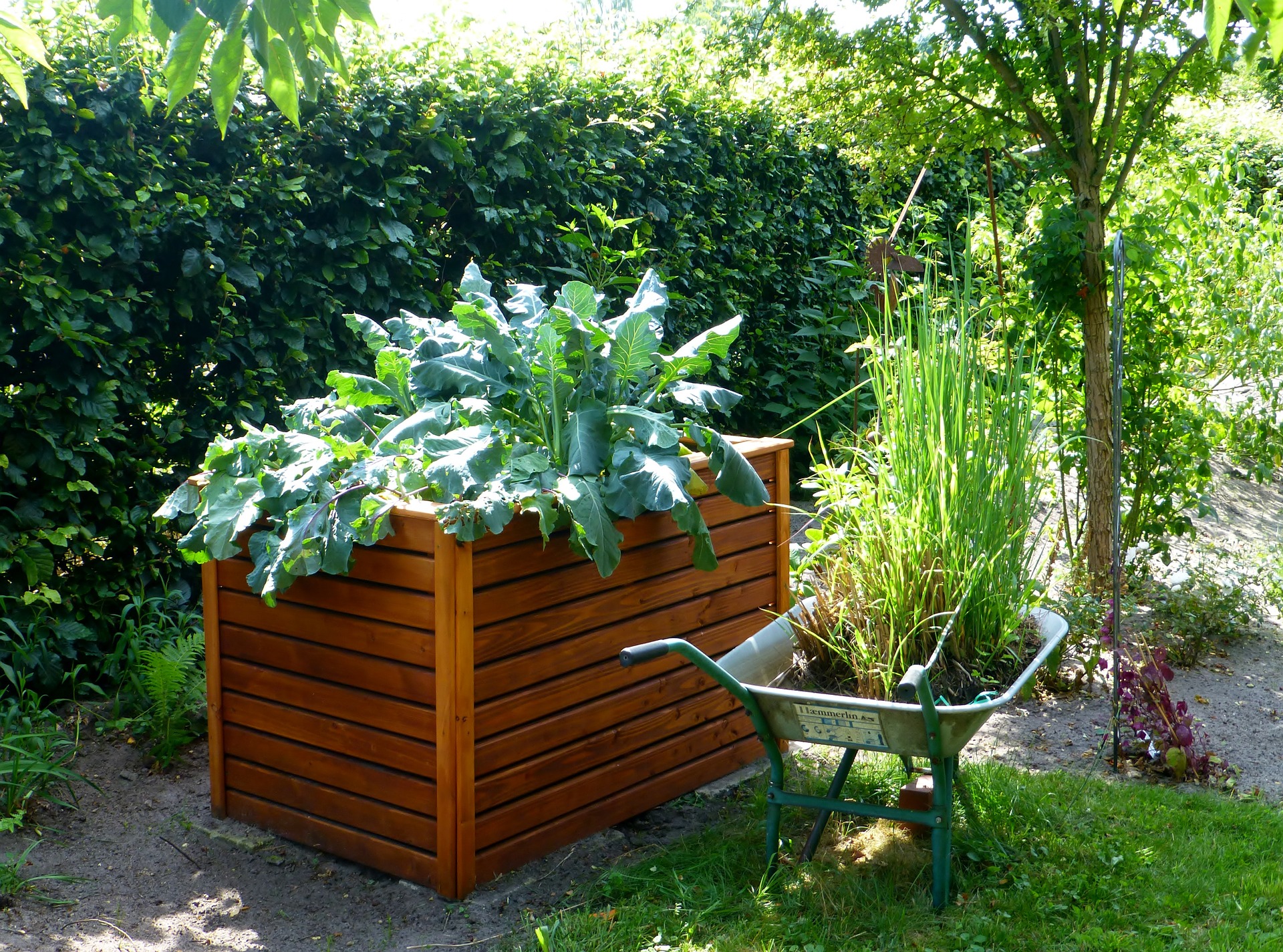15 Awesome Raised Garden Bed Questions You Can Answer Now
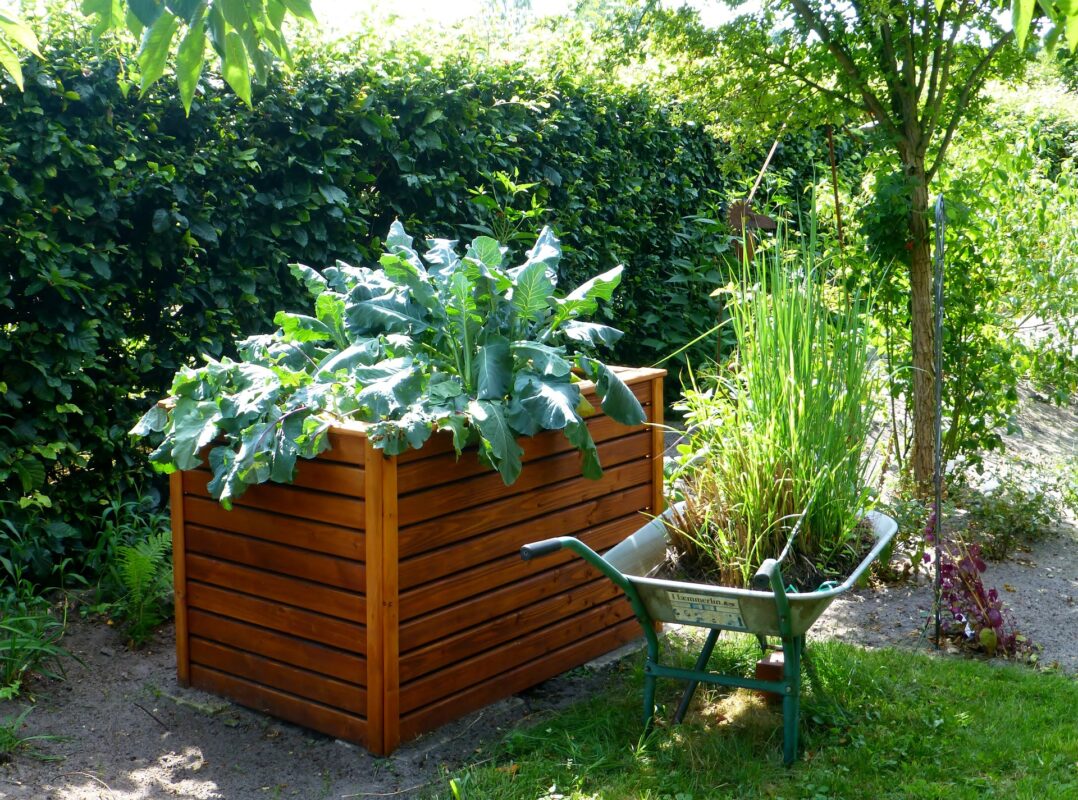
What are Raised Bed Gardens?

A raised garden bed is a garden bed with side walls or legs that elevate the soil higher than the surrounding ground level. The side walls can be made out of many different materials such as:
- metal roofing
- wood
- rocks or cement blocks
- hay bales
- concrete
- galvanized or ceramic containers
The legs of some higher raised beds are at each corner and the base of the bed is elevated off of the ground. Usually these “table top” raised beds are created so the gardener can stand while tending the garden beds. You may see them in greenhouses or as a smaller decorative bed in a garden.
How High Are Raised Bed Gardens?
Height of raised beds are not standard. Many gardeners create beds for their own individual needs or for decorative qualities. Most gardeners do not want to kneel on the ground to tend to the weeds or seeding garden beds. Creating raised garden beds allow the gardener to choose the height and building material. The aim is to allow most home gardeners to sit or stand while they inspect plants or pull weeds. There are other reasons as well which we will discuss later. However, elevated beds in a greenhouse may be at waist height to allow room for supplies below the beds.
Do Raised Garden Beds Need To Be Level?
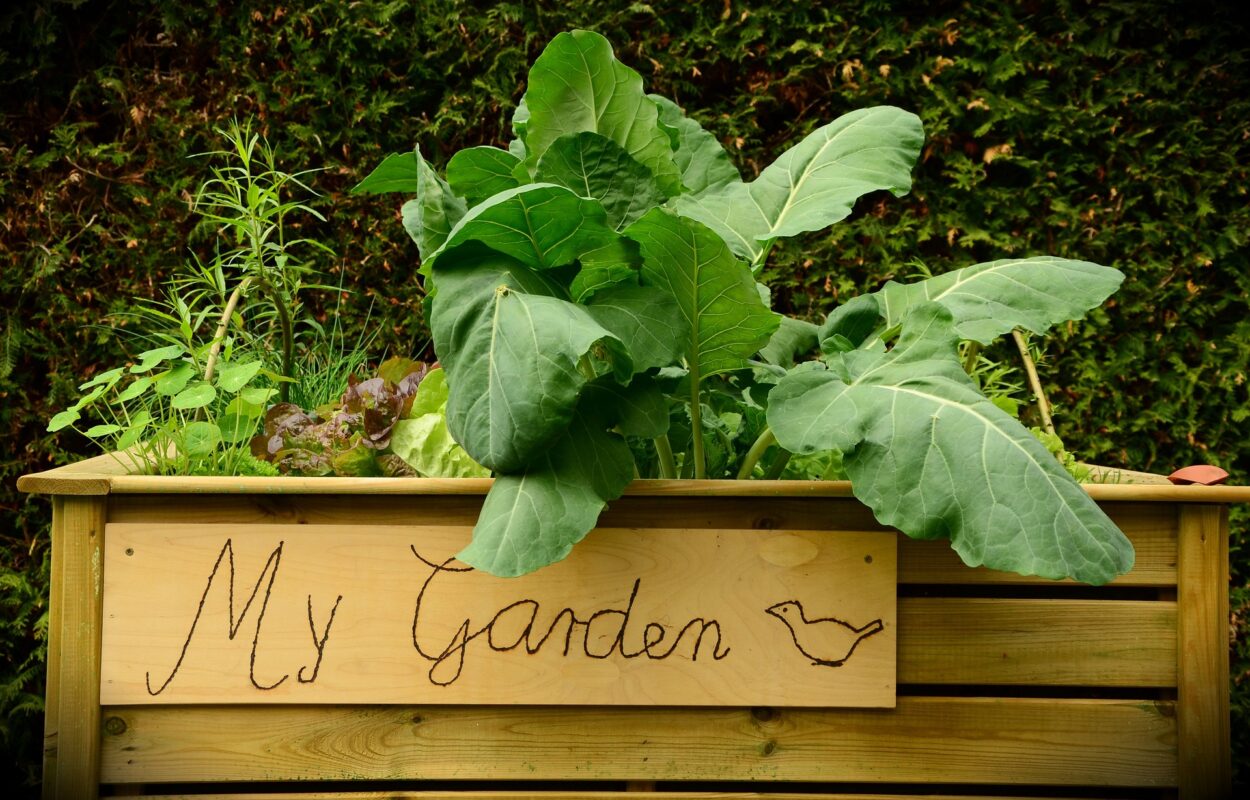
Individual raised garden beds should be level so water does not collect at one end of the bed, or the other. Plants need optimal conditions to flourish which a level bed provides. Also, worms tend to stay at a certain depth and collect at a level most beneficial to them. If you tilt a raised garden bed, the worms might stay at one end only. Worms aerate the soil and provide fertilizer in their poo. To combat slope conditions, you can have multiple raised beds that stairstep down a slope with each bed level on its “step”.
Does A Raised Garden Bed Need More Water?
Raised garden beds may need more water because plants tend to grow more rapidly in raised garden beds because of the concentration of nutrients when you control soil conditions. Also, in dry areas such as Arizona, the beds tend to dry out because of sun, wind, and dry air. In these conditions you may need to water daily. In other states such as Oregon, where there are moist conditions, a raised garden bed may only need water 1 or 2 times per week. Installing a drip system on a timer and checking it weekly can ensure your plants have adequate moisture. Also, providing a thick layer of mulch on the top of the soil holds moisture in especially in drier climates.
What To Fill Raised Garden Beds With?
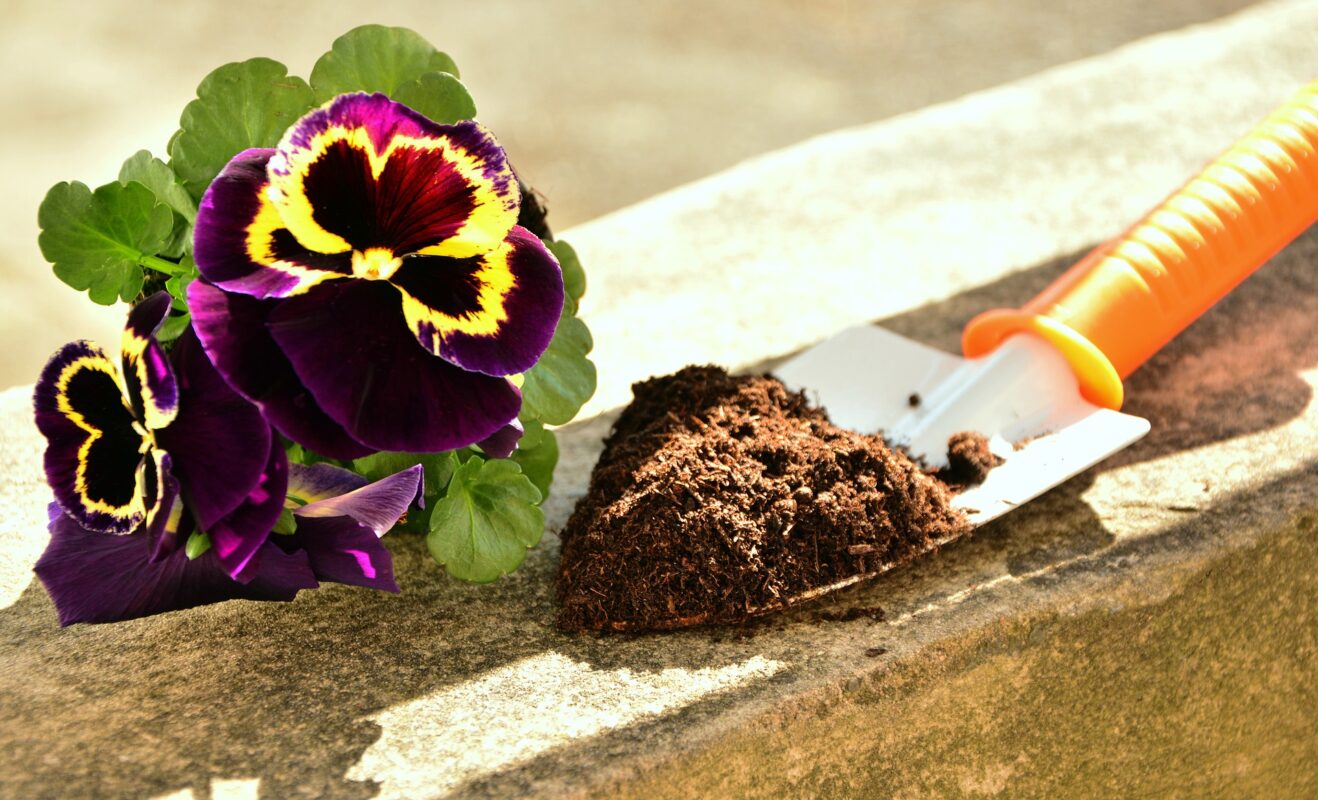
Fill raised garden beds with good quality soil mixed with organic compost. One of the best things about raised bed gardening is the ability to create the best concentrated growing conditions for your plants. Also, each bed can include soil that has a pH balance optimal for the plant you are growing. Tomatoes, for example, are an acidic fruit that like acidic soil between 4.3-4.9 pH which is too acidic for other plants. You can ensure your tomato raised bed is at this pH level by adding pine needles or peat moss to the soil. Here is a link to my blog post on soil pH levels.
When To Start A Raised Garden Bed?
The best time to start a raised garden bed is the fall before growing season. Creating a raised bed has several steps including:
- building the raised garden bed
- installing an irrigation system, if you want one
- creating compost for the raised bed (homemade compost takes 6-9 months)
- sourcing good soil
- planning the placement of plants according to companion planting (Yes,plants have relationships) and their nutritional needs
- ordering and starting seeds in the spring according to their hardiness zone (you must plant seeds late enough to avoid frost but early enough so they have an adequate growing season)
Where Should A Raised Garden Bed Be Placed?
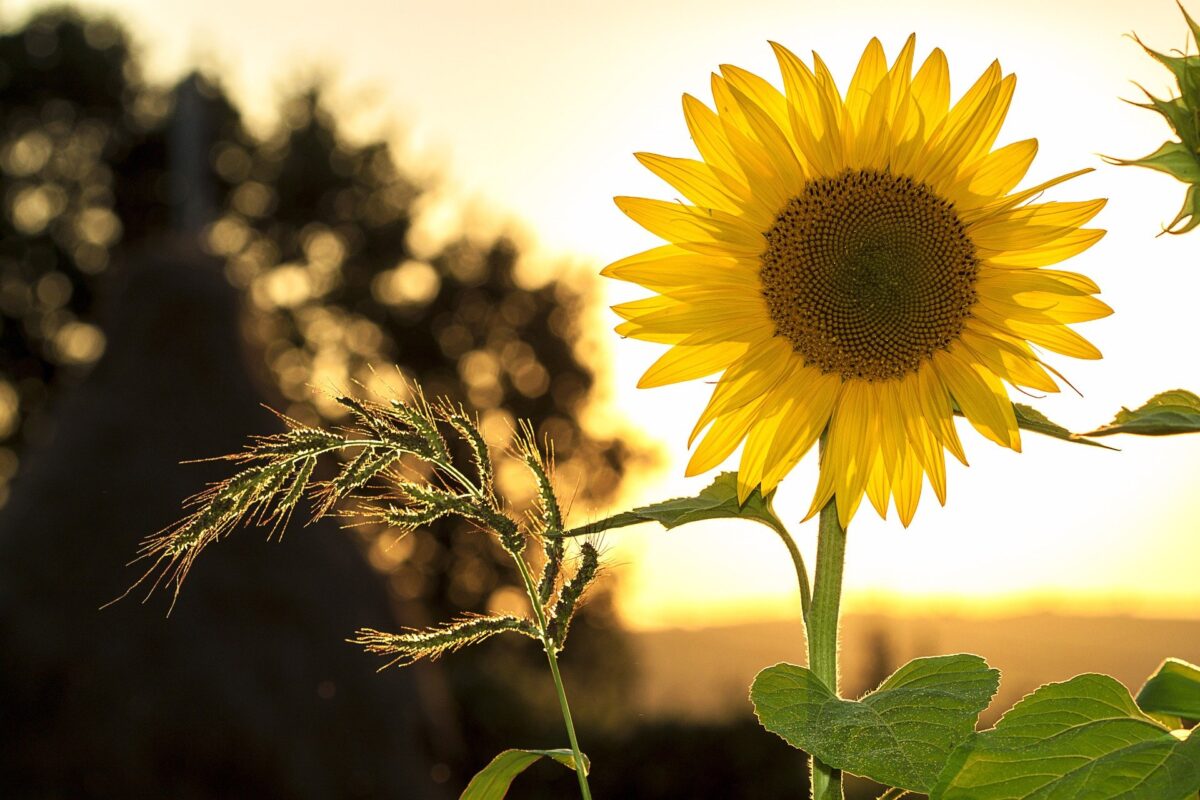
The plants you grow determine placement. Most vegetables need at least 6-8 hours of full sun per day so they need a sunny location. However, lettuce wilts and bolts (goes to seed) in hot conditions so you would place your lettuce bed in partial shade or cover it with landscape fabric.
Why Use Raised Garden Beds?
There are several reasons why people use raised garden beds including:
- The height of the bed can reduce strain on the back during long periods of work in the garden.
- Controlling the soil can give your plants the best growing conditions they need to thrive. By not tilling the soil, or letting worms till it for you, you create the best conditions for plants. In addition, you can add fertilizer and compost to keep beds in good condition.
- Deep soil also controls drainage. Roots do not stand in water. This prevents root rot or mold with deeper soil drainage.
- Pests and critters do not have easy access to raised beds.
- Creeping grasses, or weeds in general, do not take over in a raised bed.
- Raised garden beds look neater than a traditional garden
- Seeds can be planted earlier in the season. Mulch and cover protect raised garden beds from frost. This also prevents root damage from transplants.
- Raised garden beds are great for beginners because it teaches everything you need to know about gardening and soil conditions. Remember that soil has its own biosphere of microorganisms which is why less tilling is the best.
- The beds can be moved or removed easily.
Is Raised Bed Gardening For Handicapped?
Raised bed gardening can be especially good for handicapped individuals. Since there are many different definitions of handicapped, I cannot cover it all here but for individuals with mobility issues, raised garden beds can bring the garden to the best height or width. In addition, mentally handicapped individuals understand the boundaries of the bed. They learn to care for specific plants in a specific area. But raised garden beds can be mentally soothing to us all by giving us a structured and simple place to grow nutritious food.
What Are Some Raised Bed Gardening Mistakes?
The internet is full of good advice for raised bed gardening but there are some mistakes. Some of the common mistakes in raised bed gardening are:
- Making raised garden beds too wide. You should be able to reach the mid point from each side. This is actually one of the best things about raised beds and the worst if you get it wrong.
- Not providing or planning the correct nutrients for the plants in the raised garden bed. The advantage of raised bed gardening is to be able to concentrate nutrients specific for the plants. It takes some research to know what your plants need. Plan well and you will have an abundant harvest.
- Using building materials that leech hazardous chemicals into the soil.
- Not providing enough space between raised garden beds. You will need to bring a wheel barrow between beds to augment the soil with compost or to hold weeds that you want to burn. Plan your paths as well as the beds. Also, if you use a water hose, think about how the hose will reach all beds.
- Some people want irrigation but do not plan for it when they build the beds, making a plumbing nightmare.
- Pathways become choked with weeds. Make sure you can get a lawn mower between the beds or better yet, plant a low-growing cover crop or add gravel or stone pathways.
- Some people forget to mulch the raised bed. Mulching helps retain moisture within the bed. This saves water since raised beds usually need more water during their intense growing season.
Is Raised Bed Gardening For The Elderly?
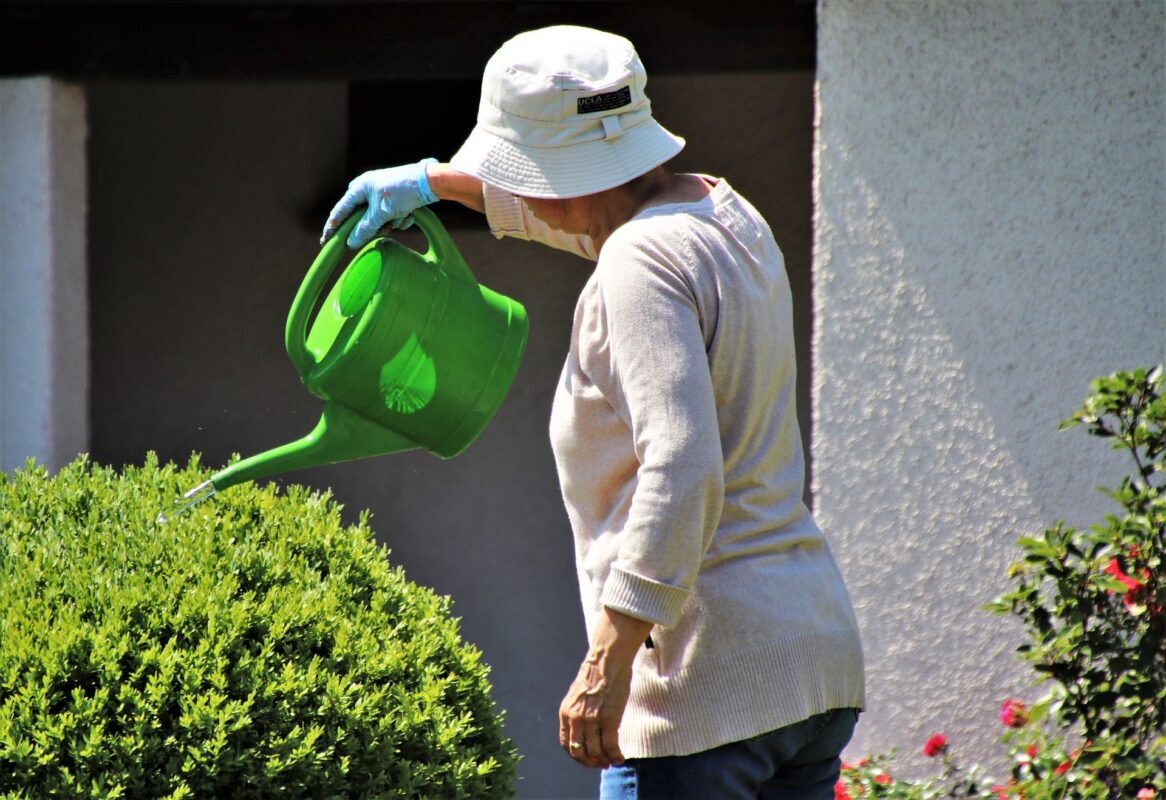
Raised bed gardening is great for the elderly. I’m not quite retirement age yet but it is just around the corner. However, I chose raised bed gardening because, as I age, I do not like the soreness that comes from getting down on my hands and knees. I save that for my yoga mat. I also find raised bed gardening saves time, with little need for pulling weeds. Instead, it allows me to walk among the beds for their feeding and watering. Cotton, my cat, often trails along behind. It is good exercise without the back strain.
Are There Raised Bed Gardening Kits?
Raised bed growing kits are available. You can find many of them online, including at Amazon. Raised beds” target=”_blank” rel=”noreferrer noopener sponsored nofollow”>Here is a link to Amazon. These beds can save time if you are a weekend gardener. Save the building until you have free time.
However, if you are up to it, I challenge you to think about what you have in your community. You can use salvaged supplies instead of buying a kit. Use straw bales flipped on their side, which also provides a bench to sit on. If the straw is rough, you can add a board on top. Or, you can purchase galvanized stock tanks at various heights. You can even use cement culverts or make your own cement and papercrete bed using a refrigerator box.
Can You Do Raised Bed Gardening On A Budget?
If you are a scavenger, you can definitely do raised bed gardening on a budget. I saw a grass cutter burning tall grass that he was cutting in a field. He left a big pile of grass cuttings for me when I told him I wanted to make compost. I also have a neighbor with cows so I was able to get free manure. I started my compost pile with these two ingredients plus kitchen scraps.
Luckily, our neighbor built a garage and had a few panels of metal roofing. He gave them to us in exchange for some help digging post holes (something we would have helped him with anyway). We bought a few more pieces of roofing from a roofing supply shop nearby (they delivered for free since it was so close). My husband bought steel L-posts, painted them with some rust protectant paint, that we had left over, drilled some holes, and he built the beds by attaching everything with small bolts. We spent less than $100.
Are There Raised Garden Bed Plans?
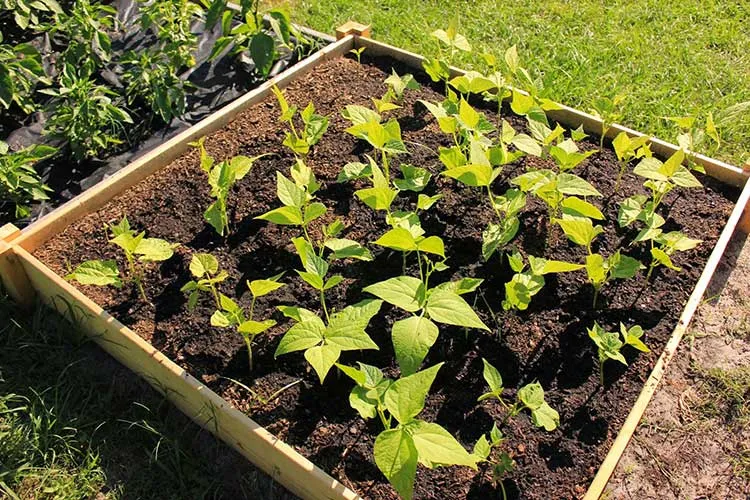
If you are a woodworker, you can make some elaborate raised garden beds but there are easy, free, raised garden bed plans online. Here is a link to Epic Gardening’s blog post including 50 free plans and ideas. In addition, you can find plant layout plans online or sign up to receive a copy of my companion planting guide by commenting with “companion” in the comment form below.
Conclusion
Raised garden beds are used to produce a lot of fruit and vegetables in a small space. They are perfect for patio garden areas where you want to keep planting areas neat but also want to provide food for your family. I hope you understand how valuable raised bed gardening can be. Please leave a comment below, if you have more questions, or tell me about your own garden. I love hearing from you!
